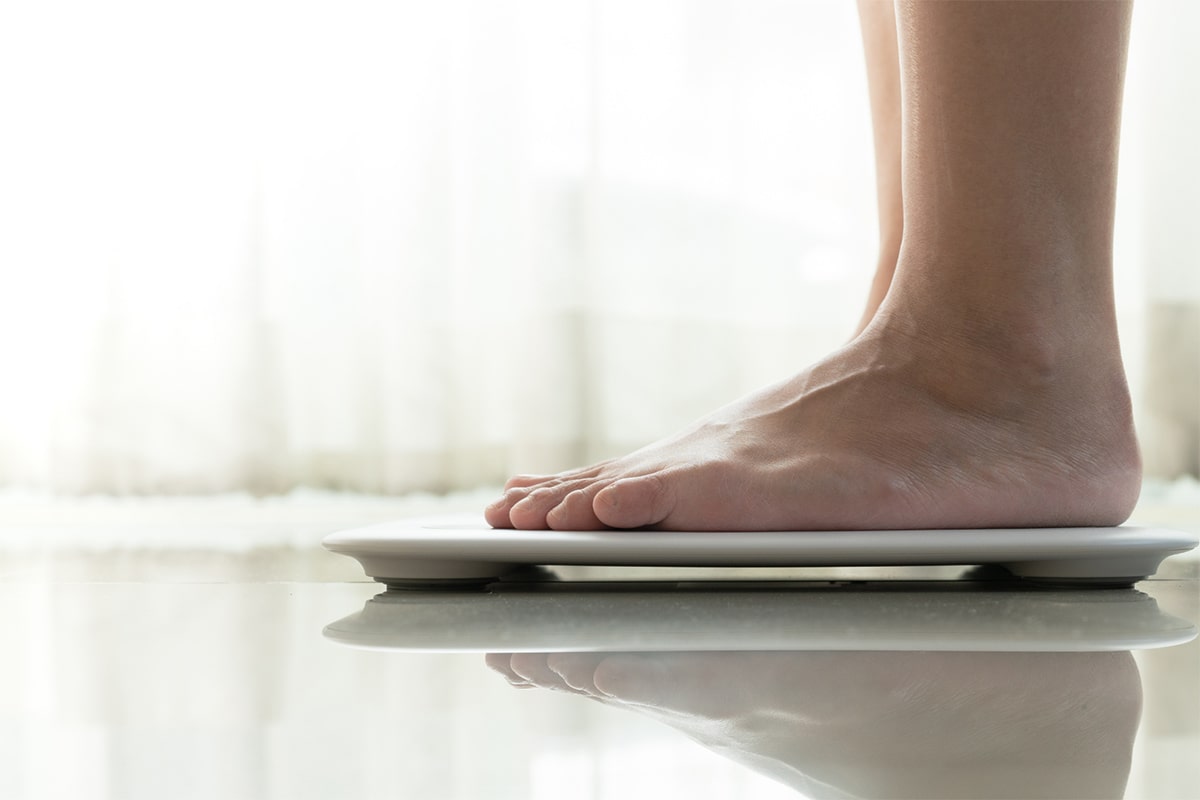Continuous Glucose Monitoring: The Facts Behind the Fad

From social media to internet search banners, it’s hard to miss ads for Continuous Glucose Monitoring (CGM) products. Touted as a way for you to “take control of your health,” CGM companies market their devices and accompanying apps as a high-tech method to analyze and understand how your body responds to your diet, exercise and sleep.
Weight gain in midlife is a common side effect of both hormonal and lifestyle changes. If you’ve struggled with a stubborn shift in your body weight, especially an increase in abdominal fat, it’s natural to be curious about any new method to gain an edge. But how accurate are these CGM marketing claims, and how helpful is the information they provide for weight loss and managing your health?
What is Continuous Glucose Monitoring (CGM)?
Continuous Glucose Monitoring (CGM) is a technology that allows individuals to track their blood glucose levels in real-time throughout the day and night. Consumer CGM devices are typically placed on the back of your arm, with a small sensor that inserts itself under the skin with a spring-loaded needle.
It continually measures blood glucose (sugar) levels from the fluid around your cells. This information is then transmitted to a wearable device or smartphone app, providing a continuous stream of data about blood sugar levels. Commercial CGM devices are typically replaced every one to two weeks.
For over 40 years, CGMs have been used for people with diabetes, who need to monitor their blood glucose closely to avoid the health risks from uncontrolled peaks and valleys. However, health technology companies pivoted towards marketing these devices to people without diabetes to similarly monitor their blood sugar.
Why Does Blood Glucose Matter Around Menopause?
Midlife and menopause bring significant hormonal changes that impact blood sugar regulation and insulin sensitivity. Research has shown that hormonal fluctuations, such as decreased estrogen levels, can lead to insulin resistance. This increases the risk of diabetes or exacerbating existing diabetes in some women.
Additionally, midlife often comes with various health concerns, including an increased risk of cardiovascular disease, weight gain, and metabolic disturbances. Monitoring blood glucose levels can be a valuable tool in understanding how diet, lifestyle, and hormonal changes affect overall health during this transitional phase.
Why Use CGM?
While CGM can provide valuable insights into blood glucose levels, it’s not considered medically necessary for people without diabetes. It also is not an essential part of a weight loss program. However, it may be appropriate for you if you have the following concerns:
Diabetes management
CGM is widely used by individuals with diabetes to maintain tight control over their blood sugar levels. If you have diabetes, especially if it’s poorly controlled, CGM can be a game-changer in understanding and managing your condition effectively.
Pre-diabetes or insulin resistance
People who have been diagnosed with pre-diabetes or insulin resistance may benefit from CGM. It can help you track how your body responds to dietary changes, exercise, and hormonal fluctuations and assist with sustaining behavioral changes that can lead to improved health and well-being.
Weight management
Some CGM companies claim that monitoring blood sugar levels can aid in weight management. The idea is that by understanding how different foods affect blood sugar, individuals can make more informed dietary choices, potentially leading to weight loss or maintenance.
Menopause symptom management
Some menopausal symptoms, such as hot flashes and night sweats, can be linked to fluctuations in blood sugar levels. CGM may be able to help you identify patterns and triggers so you can better manage your symptoms.
Curiosity
Even if you don’t have a specific health condition, CGM can be a tool for those curious about how their bodies respond to various factors like diet, stress, and exercise. Bear in mind that more data is not always better, especially if you don’t have the tools to interpret it appropriately. If you choose this route, don’t go it alone—work with a licensed professional who can help guide you.
Interpreting CGM Data
CGM data can offer a glimpse into how your blood sugar changes during the day. However, looking at data without a background in the science of metabolism can lead people to misunderstand what they’re seeing.
Here are a few key points to keep in mind:
- CGMs don’t measure blood sugar directly, so their measurements of body fluid lag about 15 minutes behind that of the glucose levels in your blood.
- It’s normal for blood sugar levels to rise after eating, especially if the meal contains carbohydrates. The body releases insulin to help regulate these spikes. Seeing that your blood sugar rises after eating is not a sign of dysfunction and doesn’t mean that you ate “bad” foods. However, excessively high post-meal spikes, especially if they persist over time, may indicate a need for dietary adjustments.
- Food and exercise aren’t the only factors that influence blood glucose levels. Mood, stress, sleep, medications and hormone levels can all change how much glucose your body makes available in your blood.
- Everyone’s response to food is unique. Some individuals may experience significant blood sugar spikes after consuming certain foods, while others may not. This is influenced by factors such as genetics, metabolism, and insulin sensitivity.
- Recognize that more data is not always better. CGM is just that—continuous. Getting constant feedback on what is happening in your body is not always the best formula for mental health. Information overload is real, and can create anxiety and hyperfixation. In addition to paying attention to your glucose data, pay attention to how it makes you feel. Is it adding to your health, or making you feel worse?
Claims About CGM and Weight Loss
Several CGM companies claim that their devices can assist in weight loss by providing insights into how different foods affect blood sugar levels. These claims are often based on the idea that by tracking glucose responses, individuals can make dietary choices that stabilize blood sugar, potentially reducing cravings and overeating.
However, it’s essential to approach these claims with a critical eye. There simply isn’t sufficient research to support these claims at this point.
While CGM can indeed provide valuable information about how the body responds to different foods, the relationship between blood sugar levels and weight loss is complex. Weight management involves numerous factors, including calorie intake, physical activity, metabolic rate, and individual genetic factors.
Some researchers see CGMs less as a “biohack” and more as another tool to promote the healthy habits already known to support a healthy weight. A 2020 survey of non-diabetic CGM users found that:
- 47% were more likely to go for a walk or exercise if they saw their blood glucose rise
- 87% felt that they modified their food choices based on CGM use
At this point, CGM is a tool in a broader approach to weight management. It can help you make more informed choices about your diet and lifestyle, but it should not be seen as a standalone solution for weight loss.
If you fall into one of the categories mentioned above or are interested in its potential role in weight management, exploring CGM as a tool for improved health and well-being may be a wise decision. Consult with a healthcare professional to determine if CGM is appropriate for your specific situation and to approach weight management with a comprehensive strategy.
Sign up for more unique women’s health content
By submitting this form, you agree to the Lisa Health Privacy Policy and Terms of Use


